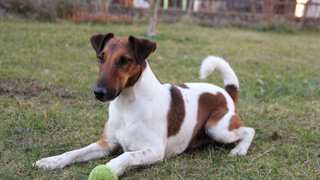Like all breeds, Westie diet and nutrition are important to the dog's health and well-being. And it's important that dogs of this breed eat high-quality foods that contain a lot of animal proteins and fats (which most cheap dog foods have very little of). Owners feed their Westies a variety of dog food, from dry kibble to wet/canned to fresh/home-cooked, but perhaps the most popular choice is feeding premium dry food (like Fromm or Royal Canin) to a West Highland White Terrier, specifically food formulated for small breeds. Depending on several factors including age, weight, and activity level, adult Westies need an average of three-fourths of a cup of dry food (600 calories) per day, divided into two meals; growing Westie puppy food portions are slightly less. A six-month-old Westie puppy, for example, will need about half a cup (400 calories) of food daily, divided into three meals. (See the chart below to determine the portion size of food for Westies of different ages.)
It's important to note that for the typical Westie, food allergy prevalence is quite high. Many Westies can develop skin conditions from a lack of fatty acids in their foods; experts recommend either using a food specifically formulated to address food allergies, or including a fatty acid supplement in the Westie's diet plan if the dog shows signs of food allergies. In any case, consult a veterinarian for more info.
West Highland White Terrier Feeding ChartDog AgeDog WeightFood TypeAmountFrequency6 Weeks5 lbsDry0.1 cups3x/day3 Months6 lbsDry0.15 cups3x/day6 Months8 lbsDry0.2 cups3x/day9 Months12 lbsDry0.3 cups3x/day12 Months+16 lbsDry0.4 cups2x.dayIt's a good idea to try and stick to the above-listed portions, because unfortunately Westies have a high tendency for obesity. And a fat Westie is more likely to have breathing and digestive issues, not to mention a shorter lifespan. The primary cause of obesity in dogs is "free-feeding," whereby food is left in the dog's bowl all day so it can eat anytime it wants. Veterinarians highly recommend only putting a Westie's dish in the feeding area at mealtimes, then picking it up 15-20 minutes after the dog begins eating.
Those who are worried that their Westies are becoming overweight can give their dogs the simple Ribs Test: run a hand along the dog's side, and if you can't feel any ribs, it's diet time. Decrease your Westie's daily food intake by one-fourth, and add an extra walk or play period to its daily exercise schedule.







